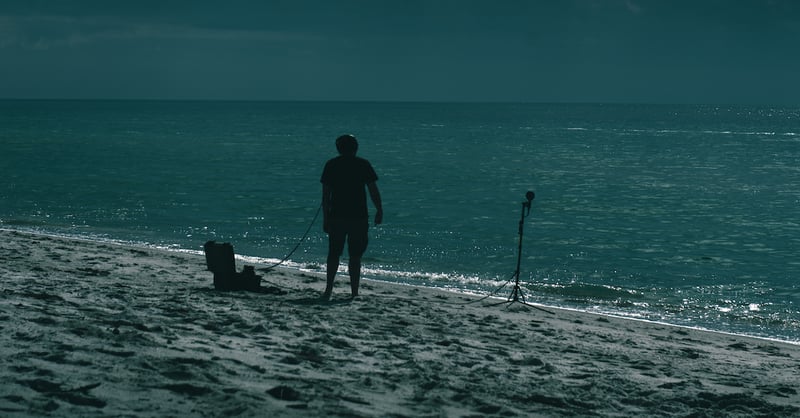Perception, planning, and expectations – your guide for purposeful field recordings.
In theory, the number of things to record are infinite: the world is always changing - either for landscape-soundscape alterations - or cycles and seasons in Nature.
But when we’re out recording, what are we specifically looking to capture? Keeping in mind that all approaches are valid, there could be a number of ways to be more specific in order to serve the purpose and enhance the effectiveness of our recording sessions.
So let’s start with the basics. Equipment? No. Your ears!
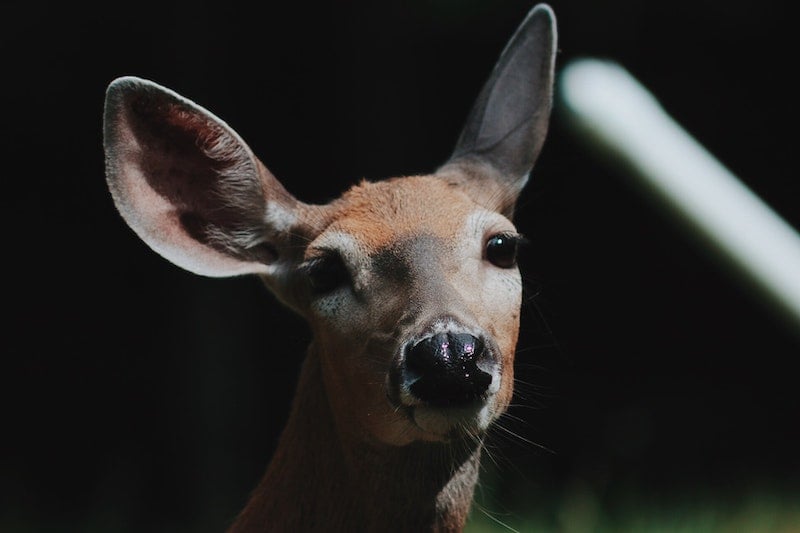
Even though field recordists, sound designers and sound editors could possibly be very attentive to our aural surroundings, how much time do we spend listening – not via loudspeakers or through what microphones are capturing – but directly to our environment? And without scrolling through our devices while at it, of course. Listening and listening only seems to be increasingly difficult. Admittedly, I only recently realized there are times when I pay more attention to what I have already recorded when listening back than in the moment when I’m actually there recording.
1. Know your recording kit like you are reading its mind
Interestingly, a few nights ago, I was in a hurry to record by the lake and I forgot my headphones at home (yes, I know). It was merely a 2-min walk back and forth but it was dawn and the sense of urgency made me remain in the place. The truth is – I am used to those microphones and the stereo technique so I just went with it. What I then realized is that I was paying significantly more attention to the whole process. I found myself trying to “preview” in the most accurate way possible what and how the microphones in their ORTF setup “would listen” to the sound field to focus on the recording subject and the representation I wanted to capture.
So here are some things I considered then:
- How were the microphones positioned in relation to the field?
- What was happening in the horizontal plane?
- What would I want to avoid?
- What was I trying to have in focus that I could achieve by adjusting the mic placement?
Since I had no real-time feedback of what exactly was being monitored, I was even extra careful with my own movements. I wanted to stay close for a while - as it just felt somehow easier to pretend I was the microphone pair, being in a similar perspective. I was on-alert for sounds I considered intrusive and for interesting sounds/events alike.
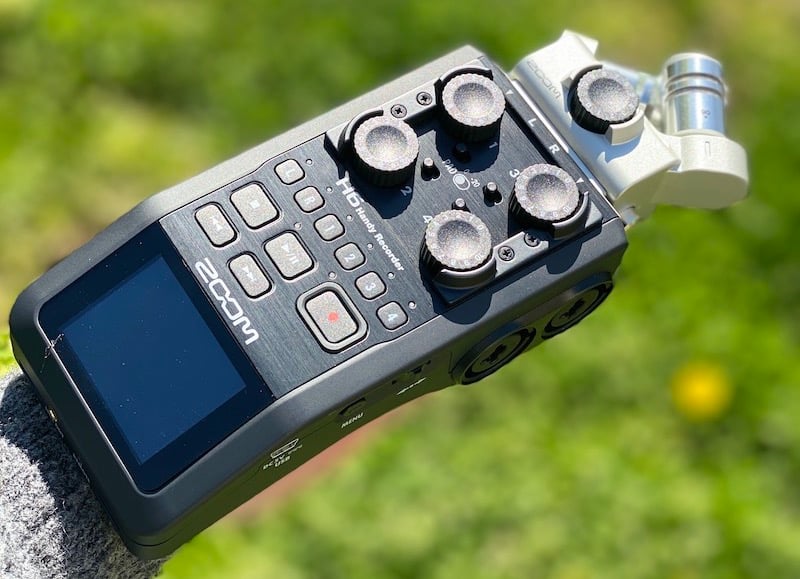
Ironically but (hopefully) not surprisingly, looking at the meter display was crucial. In such a quiet setting, I was not worried about loud sounds that would pierce through and light up the meter like a Christmas tree. It was giving me additional aid to interpret the stereo field, as well.
It's important to note that I already had a little bit of familiarity with the place: I knew approximately where some farm animals were located, the highest probabilities of domestic guard dogs barking, where the rare traffic sounds would come from, and an estimate of how long their sound would take to totally disappear out of the soundscape. Thankfully, I had the chance to do several recon walks in the previous nights, where I registered things like: a location pattern and variations of different frog species, the two precise spots where the ducks were stationed and munching on grass (though I’d seen them swim in various directions and distances).
There was also the cord from a flag pole hitting up against the pole, making a metallic sound that I wasn't happy with, so I located it and tied the cord tightly.
“Listening can be focused to detail or open to the entire field of sound.” – Pauline Oliveros
2. Talk to the locals
I was interested in capturing the vastness of this place and how sound travels through it – it’s a very large lake with soft small hills all around. On this particular early morning, the fish easily caught my ears’ attention. They have been spawning and it’s common for them to die afterward, so a few of them were twisting and turning frantically on the shore, causing deep and fast splashes. Because this couldn’t be a simple event happening independently in the background of the soundscape, I immediately turned my attention - and the mic setup - to them. When I say the this couldn’t be a background event, it’s because it had detached itself from other ambient sounds - the heavy splashes were louder and distinct in timbre (compared to the wind through leaves and bird calls), and I must enter the subjective factor here - it was what got my attention.
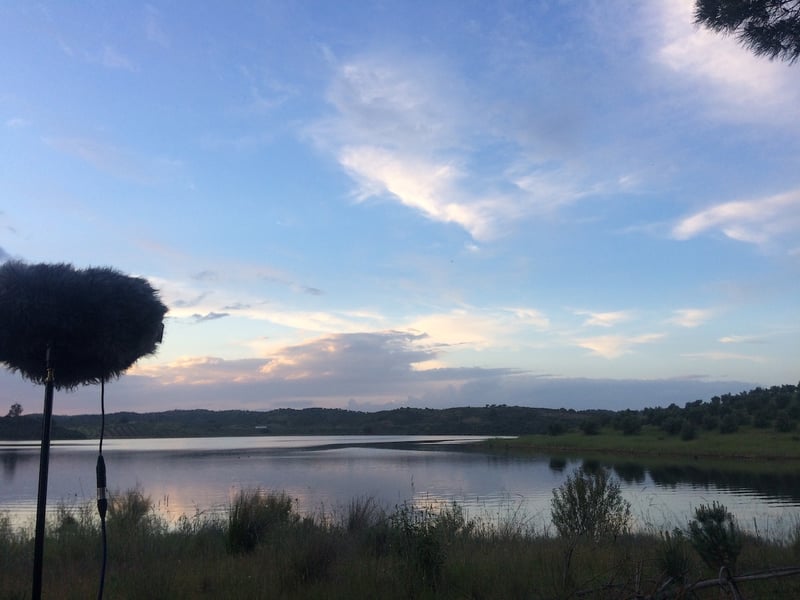
But let’s rewind for a moment - how do I know the fish were spawning and that they die afterward? I know close to nothing about this subject, and I’m new to the area. I have done some research - fauna and flora - but admittedly, I didn’t pay much attention to what fish are typically found here. This is something that's not usually on my radar, and I wasn’t expecting them to be such important (and loud) part of the “air and land” soundscape (I guess you always learn). Since I arrived, I have been taking long walks consistently, and while it’s inevitable to listen with more intention, the goal wasn’t too focus terribly on the sound, but to acquire some familiarity to start with and go from there. I saw something on the first day which seemed to be leftovers of a fish being picked on by one of the resident ducks but I was too far away to be sure. The next day I saw a fish - definitely - floating lifeless on the shore. It was still quite intact. The following day I see more and could make a guess of how other animals started to feed on them (I will spare you the details on this).
So instead of speculating much longer, about it I asked a woman in the grocery store if she knew what was going on. This is one of the things I consider more important in recording in a given locale – no amount of Google research will give you the same kind of information as the people who live there and are immersed in the surroundings. I think that if you're looking to understand how people relate to their environment and embed your recordings with something more than data, the experience and emotional aspect of it has many possibilities of impacting your work. Any search engine can give you precise information if one knows how to use it well, but it won’t tell you much about the experiences of the people who know and have been experiencing the area for decades. It’s always a good idea to meet the locals and let them know what you're doing, not only so they don’t become suspicious seeing you at odd hours with “that fury thing,” but also so that they can give you access to their land if you need, like entering someone’s farm to record their animals or letting their dogs become familiar with you so they don’t bark frantically every time they sense you are close.
"Inevitable to listen with more intention, the goal wasn’t to focus terribly on the sound but to acquire some familiarity to start with and go from there"
So, back to the fish – I moved and positioned the setup to keep the “splash area” in the center, allowing the other animals (a number of bird species, frogs and insects), the tender lapping waves, and gentle winds on the low vegetation to remain in the background. Taken the surprising circumstances, the recording turned out to be very interesting.
3. Expect unexpected things to happen
So far, all of this is been mostly focused on capturing the general ambience of a given place and with an effort to avoid sounds of human origin. (Though it's important to note – one can't ignore that regardless, the landscape has likely already suffered large and definite human intervention between farmed areas, roads and bridges, an artificial lake, the little village – all of that determines how we hear back the louder sounds since they offer points of multiple and complex reflections.
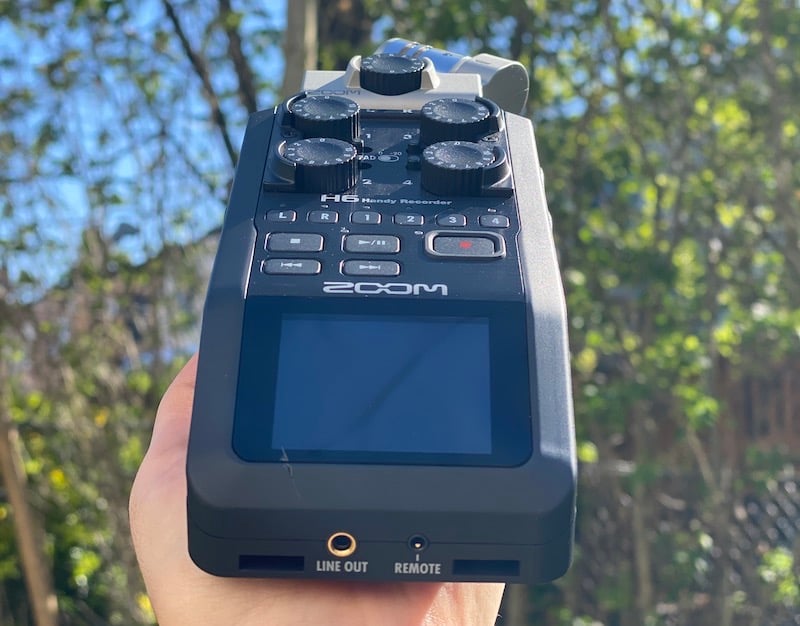
In my opinion, any approach is valid as long as we are in the field being respectful to our surroundings. Conceptually, if you just want to record the landscape as it is - for example, a rural setting with the occasional truck, guard dogs, people’s voices - that is of course totally valid. However, if the intention is to represent it without those man-made sounds, you will have to study the location and time, find the best spots and hours of the day to capture what you need. Be mindful though that this will be a very cherry-picked moment/representation of the place. In my own work, I had to do this a few times and certainly I had to edit out traffic sounds or a door closing at a distance. Naturally, the largest percentage of the recordings that didn’t turn out to be “pristine” in this idilic way, got stationed in the hard drive. Solely removing one ‘disturbing’ element won’t translate into what the place would be if it had never occurred. This is because nothing ever happens without its context.
If you heard my interview on the Tonebenders podcast about my work in the Wolf Rehabilitation Center, I talked about the morning where I sensed an odd agitation outside (compared to the previous mornings that I was used to), only to realize that a few kilometers away, there was hunting going on. Even if I eliminated the gunshots and the hunting dogs, the soundscape wouldn’t be at its "normal". If you like to tell stories and attribute meaning to your recordings, I believe that these factors of what an "accurate representation" is or isn't should be taken into account.
"Solely removing one ‘disturbing’ element won’t translate into what the place would be if it had never occurred."
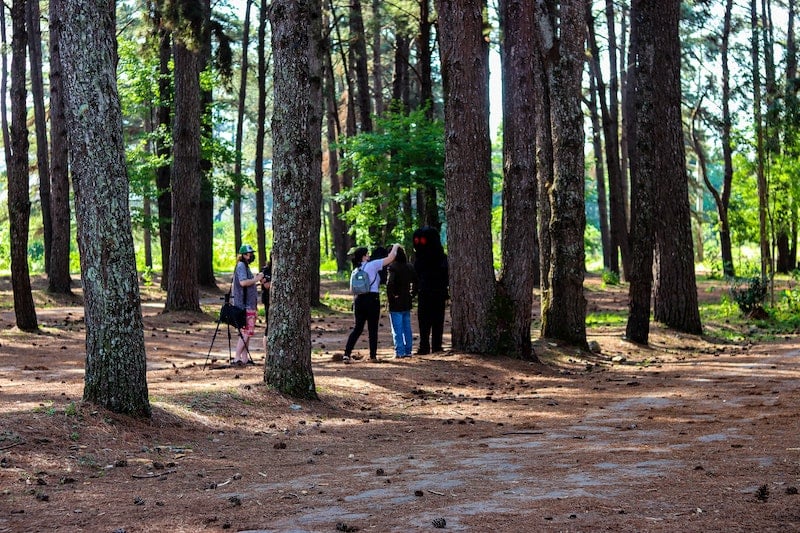
4. Research
There is almost an infinite amount of research that you can get lost in, but I’ll share those which found to be most significant, mostly through trial and error:
- Meteorologic conditions: not only for rain, of course, but I found that knowing the predicted wind direction can help a lot with making decisions regarding the recording spot, microphone orientation and recoding it if you happen to have different kits. Looking at the map and pointing out possible origins of unwanted sounds can help you navigate your days more easily.
- Physical geography - it’s no surprise that a flat place will offer you a different sonic experience than a mountainous or hilly region, or a place with water (rivers, streams, lakes, springs, etc.) versus drier land.
- Celebrations, holidays, typical weekend activities - I think celebrations and holidays are more obvious, but more casual and informal weekend activities can be frustrating – sometimes I expect less traffic at rush hour on Saturdays and Sundays, only to find out that large groups of bikers like the location just as much as I do, but with obviously different intentions.
- Miscellaneous things to take note of include: garbage truck pick up times, service/construction schedule, church bells, to name a few.
Spending some time to listen attentively or “deep listening”, to cite Pauline Oliveros, can expose the scenario with its limitations - occurring only in our own context - but it can also open opportunities to be creative.
5. Plan
Remember the dead fish on the shore? One was particularly distanced from the water - about 2 meters from it. The shore is extremely shallow, there are no fishing activities and because it rained the day before and then dried up quickly, it looked like some animals took advantage of free food in land. It’s a great opportunity to conceal the recording kit and oneself and see what animals that draws attention to. I’ve done that myself in the chance of attracting common buzzards with a bit of left overs from feeding other wild animals (important!: never ever feed animals with inappropriate food. Always make sure it’s safe and that they have the system to digest the specific food item and preferably consult a specialist). On this subject I’d like to add that many animals can get scared with the windjammer. There are camouflage that you can purchase to use on the field and another alternative is to station it near your recording spot for a few days until it won’t interfere anymore with the animal activity.
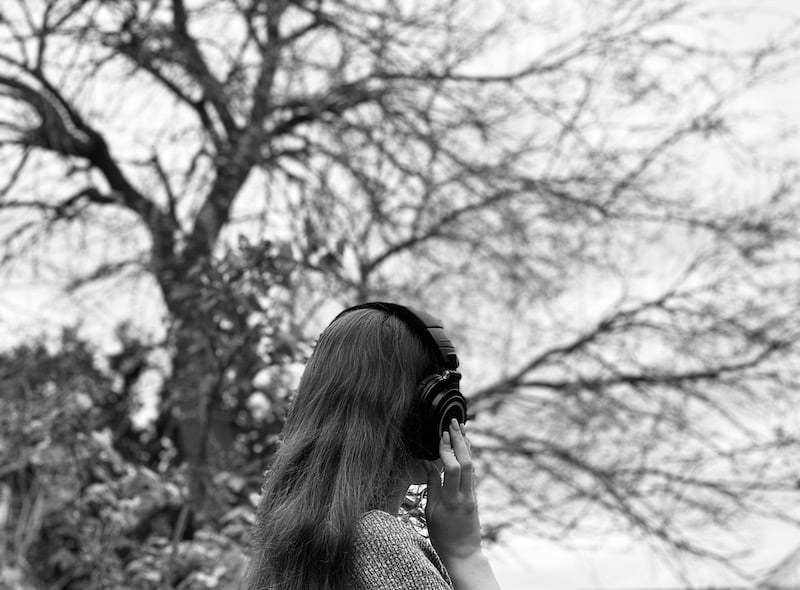
I have been stressed during some recordings, and this often is because of poor planning. Remembering your flashlight while recording late at night, dressing appropriately for the time frame we plan to be there, protecting ourselves from bug bites, letting other people know where you'll be, and that you'll be unavailable for that time. While these are simple, maybe even obvious things, I tend to feel much more relaxed and therefore more attentive when I am out in the field.
Let’s recap:
1. Know your recording kit like you are reading its mind
2. Talk to the locals
3. Expect unexpected things to happen
4. Research
5. Plan
Happy field recording!

Melissa Pons is a traveling sound recordist and award winning sound designer.



